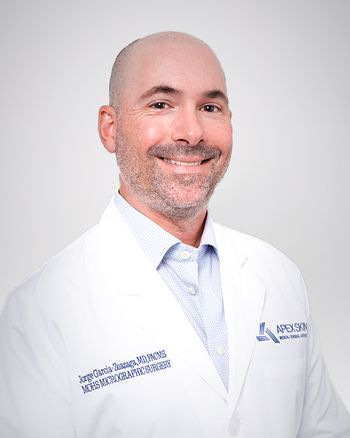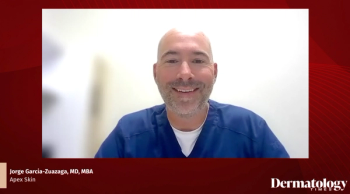
- June 2018 (Vol. 39, No. 06)
- Volume 39
- Issue 6
Work better, not harder
As regulatory demands and office expenses increase, insurance reimbursement seems flat or on a slow decline, says Howard Wooding Rogers, M.D.
“The instinct for physicians in that sort of environment where your overhead keeps going up but your revenue per patient doesn’t, is to see more patients or do more procedures. At that point, we kind of get on a hamster wheel. We’re running faster and faster and not seeming to get anywhere. The fact that more physicians are experiencing burnout is indicative of that,” he said.
But the key, Dr. Rogers said during a talk at the American Academy of Dermatology annual meeting, is to work better â not necessarily harder.
Conduct a financial analysis to determine how best to support and strengthen the practice without adding more patients, he says. But if adding more patients is unavoidable, adopt practice management strategies to maximize income and decrease expenses. Some of these include adding more office hours; cultivate referrals for new services; or hire a new dermatologist.
But above all, increase efficiency:
1. Use a scribe so the physician can spend less time documenting the visit and more time with patient.
2. Improve scheduling. Schedule patients during downtimes.
3. Keep wait times to a minimum. Mail or email paperwork to patients in advance of the visit.
4. Utilize prepopulated prescriptions, instructions and education forms.
5. Adopt a computerized patient recall system to reduce no-shows. “In my office, we have a system that calls every single patient. The computer does it two days before their appointments. For expensive and time-consuming procedures, my staff calls the patient personally the day before. Those are blocks that we can’t have empty,” Dr. Rogers says.
6. Add nurse practitioners or a physician assistant to the team. They can meet with less complex follow-ups which frees the dermatologists to address complicated cases.
7. Optimize billing. This can increase the average reimbursement for each patient. A lot of dermatologists bill at allowable lower levels to avoid audits. “If you’re providing a service and are documenting it properly, bill to the appropriate level,” he says.
8. Maximize new patient visits. New patient visits may reimburse more than established patient visits, so the physician should focus on these cases, while established patients meet with a nurse practitioner or physician assistant or, they can call with follow-up questions.
9. Renegotiating insurance contracts. “Everybody thinks their insurance contracts are set in stone, but they’re not,” he says. An insurance company, for example, might be more inclined to renegotiate contracts for physicians who serve in underserved communities.
10. Renegotiate recurring office expenses. “I hired an office manager who loves to negotiate and she is phenomenal at it. She’ called every one of my vendors and said, ‘I think we can do better elsewhere,’ [reducing] cable prices, telephone prices, garbage pickup, hazardous waste prices, liquid nitrogen prices…. No one will give you a lower price unless you ask.”
11. Changing insurers. If an insurer is paying a dermatologist at a subpar level, you may want to consider dropping the insurer. “You don’t want to do that because it hurts patients, but at the same time, you’re running a small business-not a charity.”
There will continue to be more pressure on doctors’ bottom lines
Insurers are under intense pressure to decrease their expenditures. They’re under federal pressure, state pressure and pressure by insurance buyers. “They’re definitely not looking at trying to increase the amount of money they’re paying physicians. On the other side of that, overheads are increasing substantially. Employee health insurance in my office, for example, goes up between 10 and 20 percent each year,” Dr. Rogers said.
On the regulatory side, the requirements for Medicare’s Access and CHIP Reauthorization Act of 2015 (MACRA’s) quality programs instituted through the Merit Based Incentive Payments System (MIPS) are going to ramp up. And healthcare reform, which is fluid, could still undergo big change, he says.
Change is inevitable, says Caroline C. Kim, M.D., director of the Pigmented Lesion Clinic and associate director of the dermatology department’s Cutaneous Oncology Program at Beth Israel Deaconess Medical Center, in Boston.
Dr. Kim, who presented on change management during the AAD session, writes in an email to Dermatology Times that navigating and leading through change is an important skillset for dermatologists, given the fast pace at which change is happening in today’s climate.
Changes include everything from staff and physical space changes, to rules and regulations, paperwork, insurance coverage and practice ownership. Even the smallest of changes can make big differences in a dermatologist’s day-to-day work, she says.
There are three basic principles for successful change, Dr. Kim said citing John P. Kotter, author of “Leading Change,” published in 1996.
1. Create the climate: Communicate the urgency for change.
2. Engage and enable the whole organization: Communicate the vision and empower those you lead to change.
3. Implement and sustain change: Leverage short-term wins and embed them into the culture.
“In John Kotter’s research, only 30 percent of change programs succeeded, and these were the principles that were common to the success stories. We can draw from this research in our own field,” effDr. Kim says.
An example of successful change, which is close to home for Dr. Kim, is the Harvard Business Review case study “Change through Persuasion” on Paul Levy’s leadership to turnaround the Beth Israel Deaconess Medical Center. After its merger, the hospital faced huge financial losses, high turnover and low morale.
“One take-home point is excellent communication with and engagement of the people you are leading - get into the trenches, communicate often and involve your people in the change. The second theme is empathy. As a leader, empathize with those you are leading through change,” Dr. Kim writes.
“Changes can be challenging and take a long time. Understand the group and individuals’ needs well in order to provide your group with the best environment, workflow and tools to do the best job they can.”
References:
“C019 Advanced Practice Management,” Pendharkar, Kim, Regula, et al. American Academy of Dermatology 2018 annual meeting. 1 to 4 p.m. Sunday, Feb. 18, 2018.
Articles in this issue
over 7 years ago
Melanoma diagnosis by physician or PA not always straightforwardover 7 years ago
Pulsed dye laser fails surgical scarsover 7 years ago
Calming inflammation in common skin conditionsover 7 years ago
The acne supplementover 7 years ago
Cimzia receives positive CHMP opinion for plaque psoriasisover 7 years ago
FDA approves Tafinlar with Mekinist for melanomaover 7 years ago
SPSSCS names Donna Erb new presidentNewsletter
Like what you’re reading? Subscribe to Dermatology Times for weekly updates on therapies, innovations, and real-world practice tips.

















